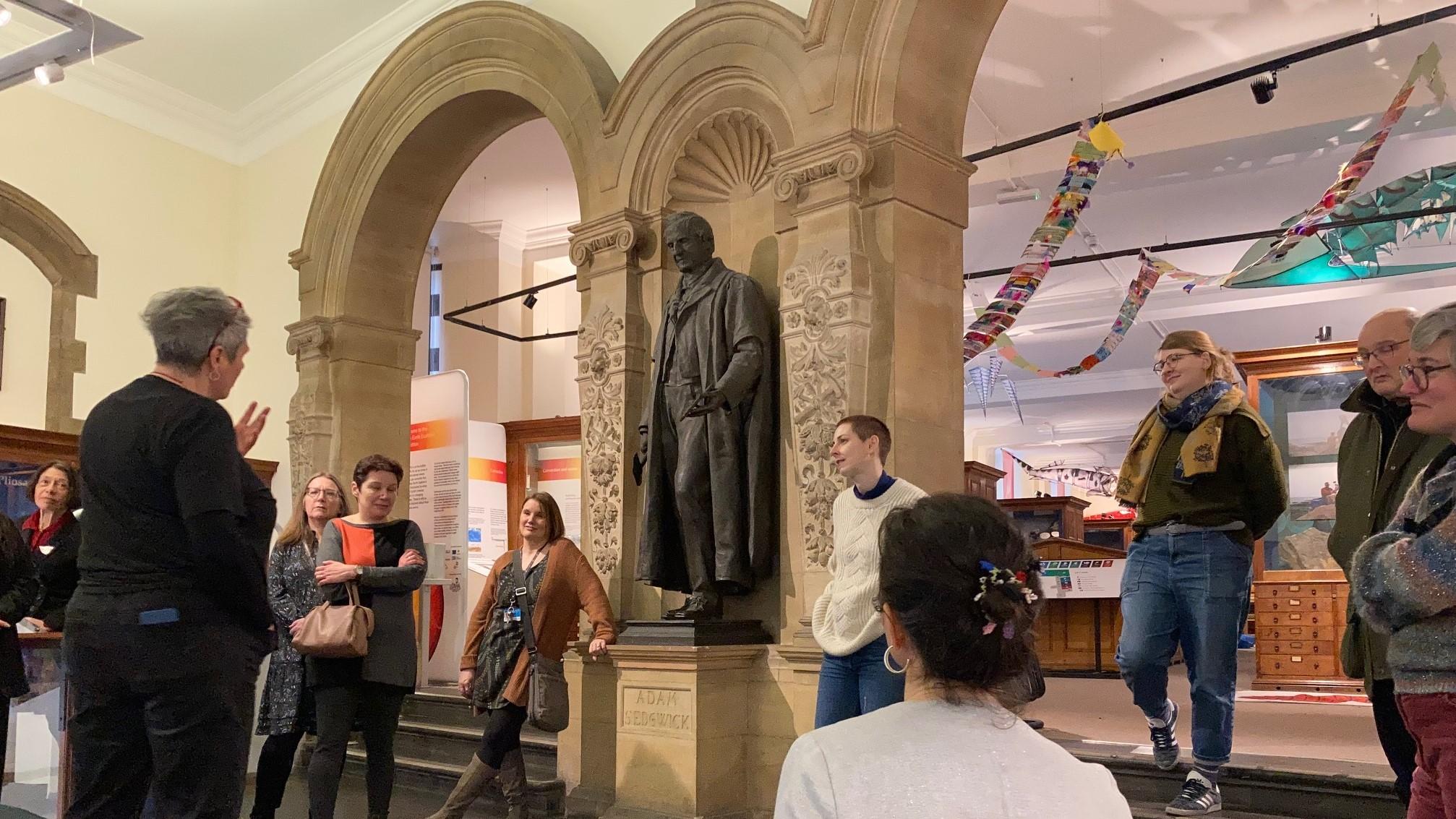
Submitted by Dr C.M. Martin-Jones on Wed, 08/03/2023 - 16:51
The Sedgwick Museum of Earth Sciences marked this year’s International Women’s Day celebrations with a tour showcasing some lesser-known stories of trailblazing women of geology and palaeontology.
The tour — hosted by Liz Hide, Director of the Museum —uncovered some of the many women whose contributions to geology have been marginalized and underestimated over the last two hundred years.
“This is about inspiring the next generation of geoscientists through highlighting the women who were key to the development of the science and the Cambridge community,” said Hide.
The tour builds on research by Sedgwick Museum archivist, Sandra Freshney — who has collated an online exhibition detailing women's experience of studying geology at Cambridge from the late nineteenth century up until the First World War.
The discussion featured role models including Mary Anning — who made important, yet unsung, discoveries of the first ichythyosaur and plesiosaur fossils. Several ichthyosaur specimens collected by Anning and purchased by Adam Sedgwick are on display in the Museum. “Sedgwick, like many academics at the time, drew heavily on the palaeontological knowledge of Anning, but her finds were not publically acknowledged in the Museum.”
Looking back through photo archives, discussion moved on to some of the first women to graduate and teach in the Department — many of whom appear in Sedgwick Club photos wielding rock hammers. Gertrude Elles, known for her pioneering work on British graptolites, became the first woman lecturer in geology in 1926.
Moving to the contemporary, Hide also introduced the Deep Earth Explorers exhibit on Earth’s inner structure, which was put together by Cambridge seismologist Sanne Cottaar and her research group. The exhibit contains illustrations of the group members with the aim of challenging the stereotypical image of a seismologist.
For those who missed the first tour, another will be held on the 19th April. Booking details here.
